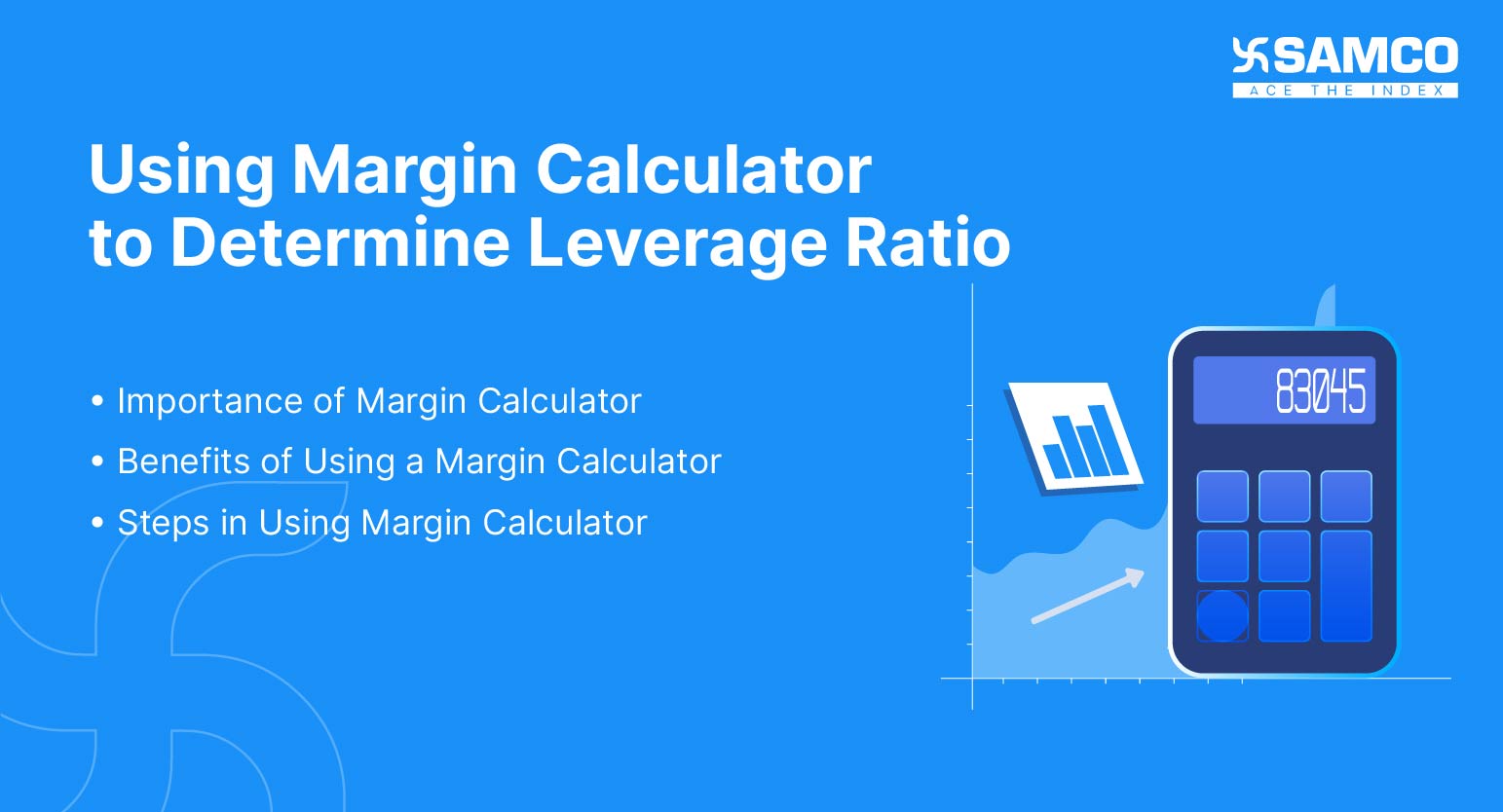In this article, we will discuss
- Basic Principles of Margin Trading
- Mastering Leverage in Trading
- Importance of Margin Calculator
- Benefits of Using a Margin Calculator
- Steps in Using Margin Calculator
- Risks of Trading with a High Leverage Ratio
 Leverage is a common term used in trading to describe the amount of money a trader borrows from their broker to invest in a particular market. Leverage can be a valuable tool for traders as it can amplify their potential profits, but it can also lead to significant losses if not managed correctly. To determine the appropriate amount of leverage, traders often use a leverage ratio, which is the amount of money a trader borrows compared to the amount they invest.
Determining the appropriate leverage ratio is crucial in trading as it can affect a trader's risk profile and the potential returns on their investment. To calculate the leverage ratio, traders must consider various factors, including market volatility, account balance, and their broker's margin requirements. Yet, determining the leverage ratio can be complex, especially for new traders. To simplify this process, traders can use a margin calculator, a tool designed to help traders determine their leverage ratio quickly and accurately.
Leverage is a common term used in trading to describe the amount of money a trader borrows from their broker to invest in a particular market. Leverage can be a valuable tool for traders as it can amplify their potential profits, but it can also lead to significant losses if not managed correctly. To determine the appropriate amount of leverage, traders often use a leverage ratio, which is the amount of money a trader borrows compared to the amount they invest.
Determining the appropriate leverage ratio is crucial in trading as it can affect a trader's risk profile and the potential returns on their investment. To calculate the leverage ratio, traders must consider various factors, including market volatility, account balance, and their broker's margin requirements. Yet, determining the leverage ratio can be complex, especially for new traders. To simplify this process, traders can use a margin calculator, a tool designed to help traders determine their leverage ratio quickly and accurately.
Basic Principles of Margin Trading
Margin is the amount of money a trader must deposit to open and maintain a trading position with their broker. Margin serves as a security deposit for the broker and ensures that traders can meet their financial obligations in case of losses. When a trader opens a position, they must deposit a percentage of the total trade value as a margin. The margin requirements vary depending on the market, the asset being traded, and the broker's policies. The Securities and Exchange Board of India (SEBI) regulates the margin requirements for trading in India.-
How is Margin Calculated?
-
Types of Margin
1. Initial Margin
The initial margin is a trader's initial deposit to open a position. It is calculated based on the broker's margin need and the position's total value. For instance, if a trader wants to buy shares worth Rs. 10,000 and the broker's margin need is 25%, the trader must deposit Rs. 2,500 as the initial margin.2. Exposure Margin
Exposure margin is the margin required to be maintained in the trader's account for the duration of the position. It is calculated based on the volatility of the asset being traded and the risk associated with the position. SEBI has set exposure margins for various market segments to ensure that traders maintain enough margin levels to avoid being stopped from their positions. Traders should be aware of the margin requirements set by their broker and maintain enough margin levels to avoid being stopped from their positions. It is also important to note that the margin requirements are subject to change based on market conditions and regulatory changes. So, staying informed about the margin requirements is essential before opening any positions.Mastering Leverage in Trading: Understanding Ratio, Calculation, and Significance
In trading, leverage uses borrowed funds to increase the potential return on investment. Leverage allows traders to control larger positions with a smaller amount of capital. The leverage ratio is the trader's total position size ratio to their capital investment. It is a measure of how much leverage a trader is using to control their positions.-
How is Leverage Ratio Calculated?
-
Significance of Leverage Ratio
Importance of Margin Calculator in Determining Leverage Ratio
A margin calculator allows traders to calculate the required margin for opening and maintaining positions. It helps traders determine the amount of capital they need to invest in controlling a specific position size based on the leverage their broker offers and the margin requirements for the asset they wish to trade.-
How Does Margin Calculator Work?
Benefits of Using a Margin Calculator
Using a margin calculator is beneficial for traders for several reasons:-
Accurate Risk Management
-
Avoid Margin Calls
-
Efficient Trading
Steps in Using Margin Calculator to Determine Leverage Ratio
Using a margin calculator is a critical step in determining the leverage ratio to use when trading. It can help traders manage their risk effectively and avoid over-leveraging. Here are the steps to follow:-
Step 1: Choose a Margin Calculator
-
Step 2: Enter the Position Size
-
Step 3: Choose the Leverage Ratio
-
Step 4: Enter the Margin Need
-
Step 5: Calculate the Required Margin
-
Step 6: Determine the Leverage Ratio
Risks of Trading with a High Leverage Ratio
High leverage ratios can increase the potential rewards of trading, but they also increase the risks involved. Traders must be aware of the risks associated with high leverage ratios, including:-
Magnified Losses
-
Margin Calls
-
Volatility
-
Ways to Mitigate Risks
-
Use a Stop-Loss Order
-
Set Realistic Goals
-
Use Lower Leverage Ratios
-
Track the Market



 Easy & quick
Easy & quick
Leave A Comment?